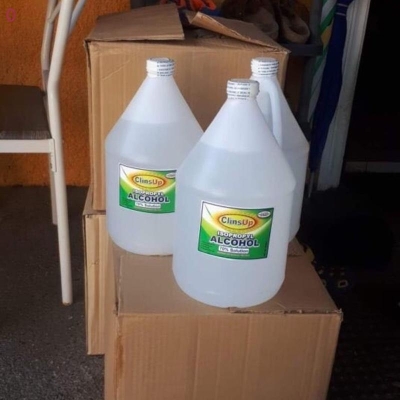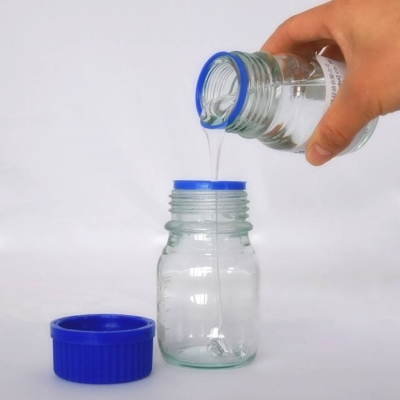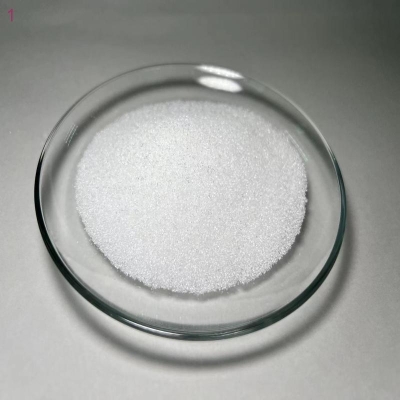-
Categories
-
Pharmaceutical Intermediates
-
Active Pharmaceutical Ingredients
-
Food Additives
- Industrial Coatings
- Agrochemicals
- Dyes and Pigments
- Surfactant
- Flavors and Fragrances
- Chemical Reagents
- Catalyst and Auxiliary
- Natural Products
- Inorganic Chemistry
-
Organic Chemistry
-
Biochemical Engineering
- Analytical Chemistry
-
Cosmetic Ingredient
- Water Treatment Chemical
-
Pharmaceutical Intermediates
Promotion
ECHEMI Mall
Wholesale
Weekly Price
Exhibition
News
-
Trade Service
【Hot attention of Chemical Machinery Equipment Network ] As one of the five major engineering plastics, nylon is not only a raw material for nylon ropes, nylon fabrics and other items commonly used in life, but also widely used in automobiles, machinery manufacturing, electrical and electronic industries, for the production of bearings, Parts such as gears, fan blades, electromagnetic distribution valve seats, etc.
There are many varieties of nylon, the common ones are nylon 6 and nylon 66.
In contrast, nylon 66 has greater strength and better wear resistance, and has a wider range of applications in the industrial field, especially in the automotive industry.
Although the market size of nylon 66 cannot be compared with nylon 6, in recent years, with the development of the automobile industry, the demand for nylon 66 is still growing rapidly.
At the same time, the environmental pollution caused by the production of nylon 66 has become more obvious.
Hot attention of Chemical Machinery Equipment NetworkChemical machinery and equipmentThere are many varieties of nylon, the common ones are nylon 6 and nylon 66.
In contrast, nylon 66 has greater strength and better wear resistance, and has a wider range of applications in the industrial field, especially in the automotive industry.
Although the market size of nylon 66 cannot be compared with nylon 6, in recent years, with the development of the automobile industry, the demand for nylon 66 is still growing rapidly.
At the same time, the environmental pollution caused by the production of nylon 66 has become more obvious.
The production process of nylon 66 is generally chemically synthesized, that is, nylon-66 salt is made of adipic acid and hexamethylene diamine and then polycondensed in an aqueous solution.
Among them, the preparation of adipic acid requires the use of a multi-step, high-energy-consuming chemical oxidation method, and the use of concentrated nitric acid to oxidize cyclohexane.
Therefore, a large amount of nitric oxide, nitrous oxide and other greenhouse gases that can damage the ozone layer are generated, which not only pollutes The atmospheric environment will also exacerbate problems such as the ozone layer hole and atmospheric warming.
Among them, the preparation of adipic acid requires the use of a multi-step, high-energy-consuming chemical oxidation method, and the use of concentrated nitric acid to oxidize cyclohexane.
Therefore, a large amount of nitric oxide, nitrous oxide and other greenhouse gases that can damage the ozone layer are generated, which not only pollutes The atmospheric environment will also exacerbate problems such as the ozone layer hole and atmospheric warming.
For many years, scientists have been exploring green and clean adipic acid synthesis methods to reduce nitrogen oxide pollution, and many research results have been achieved.
For example, in 2015, two researchers from Tsinghua University in Taiwan, China, used ozone and ultraviolet rays to oxidize cyclohexane (or cyclohexanol, cyclohexanone) to obtain adipic acid under normal temperature and pressure conditions; recently, Albert Einstein, Germany The university’s research team uses a palladium metal catalyst system to use butadiene as a raw material to produce adipic acid esters in one step through a double carbonylation reaction.
However, these new processes have not yet achieved widespread industrial application due to catalyst costs, catalytic efficiency, production capacity, and scale.
For example, in 2015, two researchers from Tsinghua University in Taiwan, China, used ozone and ultraviolet rays to oxidize cyclohexane (or cyclohexanol, cyclohexanone) to obtain adipic acid under normal temperature and pressure conditions; recently, Albert Einstein, Germany The university’s research team uses a palladium metal catalyst system to use butadiene as a raw material to produce adipic acid esters in one step through a double carbonylation reaction.
However, these new processes have not yet achieved widespread industrial application due to catalyst costs, catalytic efficiency, production capacity, and scale.
With the rapid development of industrial biotechnology, in addition to chemical synthesis, biosynthesis has also begun to be applied to the synthesis of adipic acid.
In 2000, a gene cluster containing the conversion pathway from cyclohexanol to adipic acid was discovered, and the pathway for biotransformation of cycloalkanes to cyclohexanol and then into adipic acid was determined.
Subsequently, researchers did a lot of exploration on the development of adipic acid biosynthetic pathway.
In 2000, a gene cluster containing the conversion pathway from cyclohexanol to adipic acid was discovered, and the pathway for biotransformation of cycloalkanes to cyclohexanol and then into adipic acid was determined.
Subsequently, researchers did a lot of exploration on the development of adipic acid biosynthetic pathway.
This month, "Nature Communications" published a research result of a Chinese research team using a multi-enzyme cascade catalysis method to convert cycloalkanes or cycloalkanols into corresponding dicarboxylic acid nylon monomers.
The research team designed a biosynthetic pathway containing 8 enzymes, and used 3 kinds of E.
coli for expression, combined to obtain a flora catalyst.
This biosynthetic method only needs to be catalytically reacted to make cyclohexane into adipic acid under normal temperature, normal pressure and mild conditions in the water phase.
It is not only green and efficient, but also low in cost and simple in subsequent processing.
It is expected to solve the problem of nylon 66 Pollution problems in industrial development.
The research team designed a biosynthetic pathway containing 8 enzymes, and used 3 kinds of E.
coli for expression, combined to obtain a flora catalyst.
This biosynthetic method only needs to be catalytically reacted to make cyclohexane into adipic acid under normal temperature, normal pressure and mild conditions in the water phase.
It is not only green and efficient, but also low in cost and simple in subsequent processing.
It is expected to solve the problem of nylon 66 Pollution problems in industrial development.
The pollution discharge monitoring of industrial units is an important market for the environmental monitoring industry.
The production of nylon 66 produces nitrogen oxides, so air monitoring equipment needs to be installed to monitor exhaust emissions under the constraints of environmental protection policies.
If the new green production process is promoted, the demand for related monitoring equipment will inevitably be affected.
However, we don't have to worry too much.
As countries pay more and more attention to environmental protection, the overall environmental monitoring market will continue to grow for a long time.
Adipic acid is not the only one that develops green production processes.
Although the development of the process will reduce the demand for monitoring equipment of related enterprises, the impact on the large-scale overall market is limited.
The production of nylon 66 produces nitrogen oxides, so air monitoring equipment needs to be installed to monitor exhaust emissions under the constraints of environmental protection policies.
If the new green production process is promoted, the demand for related monitoring equipment will inevitably be affected.
However, we don't have to worry too much.
As countries pay more and more attention to environmental protection, the overall environmental monitoring market will continue to grow for a long time.
Adipic acid is not the only one that develops green production processes.
Although the development of the process will reduce the demand for monitoring equipment of related enterprises, the impact on the large-scale overall market is limited.
Original title: Where does the market go from where the pollution of biosynthetic nylon is no longer monitored?







